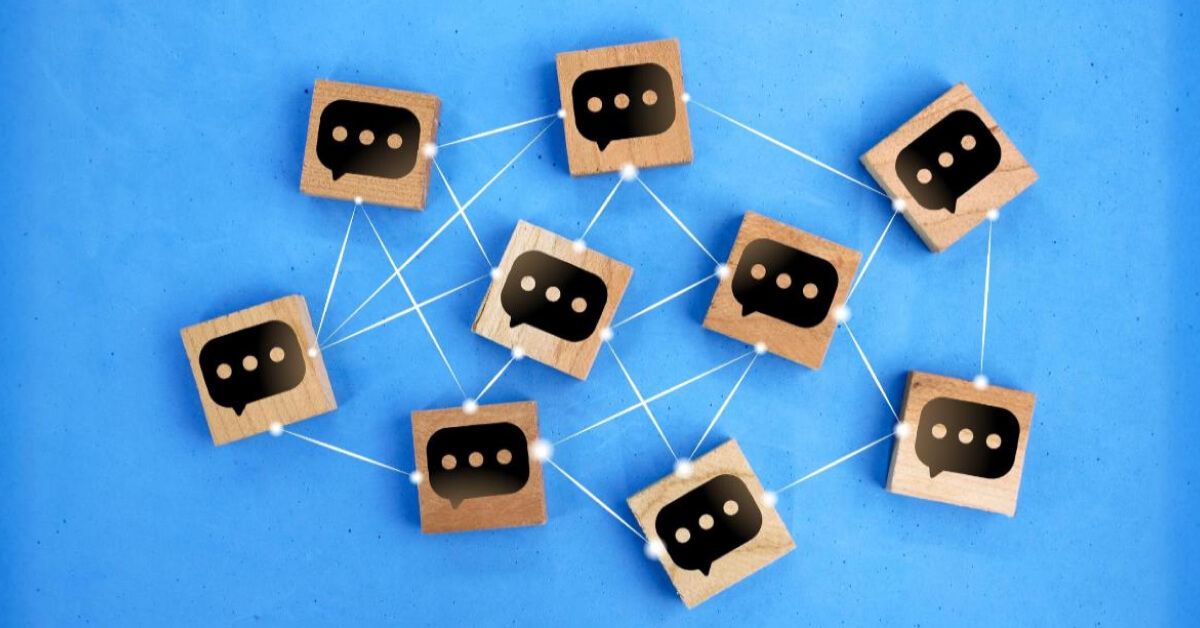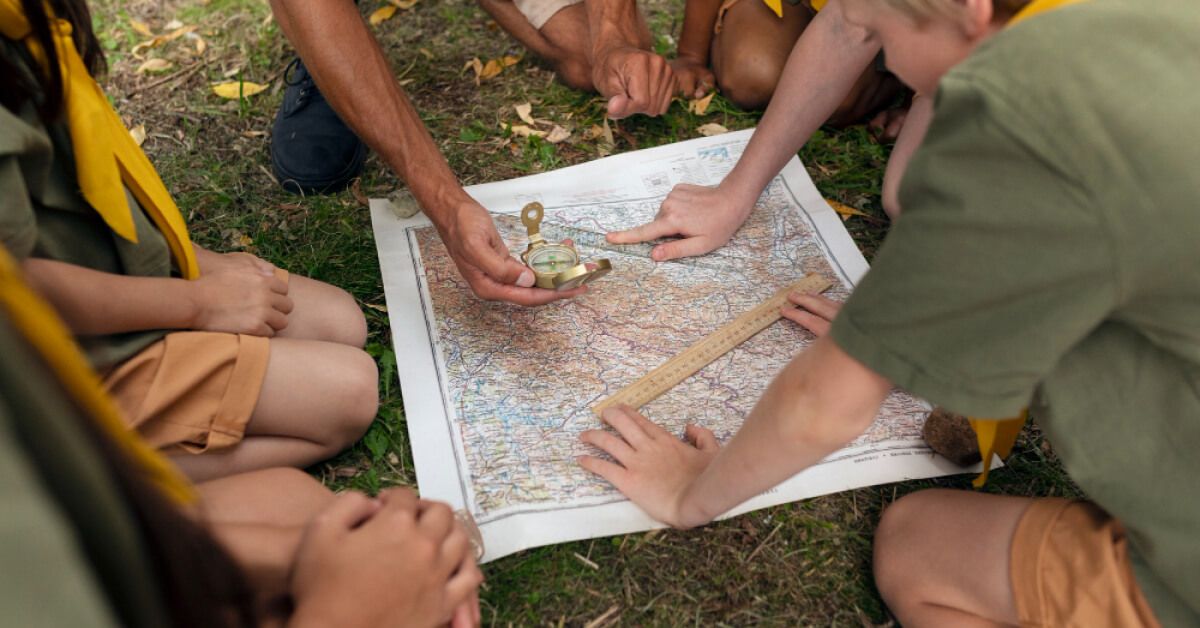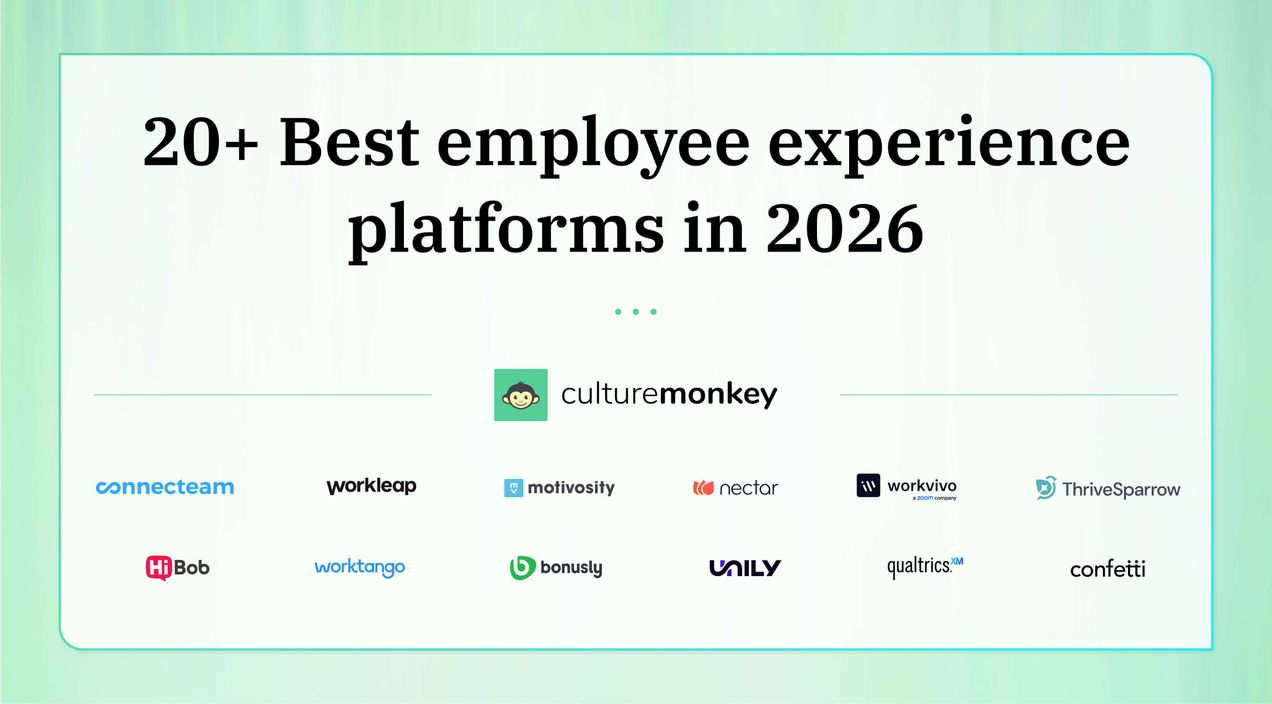Designing a team building experience that drives real connection

Think of a Formula 1 pit crew—seconds matter, precision is everything, and every team member knows their exact role. There’s no time for hesitation, miscommunication, or ego. The driver may get the spotlight, but it's the seamless coordination of the pit crew that keeps the race on track.
That’s what true teamwork looks like: synchronized, trust-driven, and laser-focused on a shared goal. Now imagine bringing that kind of connection into your workplace—not with helmets and tires, but with purpose-built team-building experiences that spark collaboration, dissolve silos, and build real trust.
In this blog, we’ll show you how to design experiences that go beyond the clichés and drive genuine connection—because like a pit crew, your team performs best when every part works in sync.
What are team building activities?
Team building activities are intentional exercises or events designed to improve collaboration, communication, and trust among team members. Whether it's solving a problem together, sharing personal stories, or participating in a fun challenge, these activities help break down silos, boost morale, and create a stronger sense of connection within the team. They’re commonly used during onboarding, retreats, offsites, or even regular team meetings to keep team spirit high.
At their core, team building activities aim to make teams work better together. They often highlight each person’s strengths, encourage empathy, and promote collective problem-solving. Activities can be as simple as an icebreaker or as elaborate as a multi-day team retreat. Some are purely fun to lighten the mood, while others are deeply strategic, tied to organizational goals like improving collaboration or innovation.
When done right, these activities go beyond just “having a good time”—they create shared experiences that translate into better communication, smoother conflict resolution, and higher engagement back at work. Over time, consistent team building efforts foster a culture of trust and psychological safety, which are essential ingredients for any high-performing team.
Why are team-building exercises important?
Team-building isn’t just about fun and games—it’s a strategic tool for stronger teams and better results. Here’s why you should stop skipping it and start planning it.
- Breaks silos: In most organizations, departments often work in isolation, leading to a lack of communication and cooperation. Team-building activities give employees from different areas the chance to work together, breaking down these silos and fostering collaboration across functions, which ultimately drives innovation and efficiency.
- Builds trust: Trust is the foundation of any successful team. By participating in team-building exercises, individuals have the opportunity to get to know each other outside the office environment. This leads to stronger interpersonal bonds and a sense of trust, which translates into better collaboration and higher performance on the job.
- Boosts communication: Effective communication is key in any workplace. Team-building exercises encourage team members to communicate clearly and actively listen to one another. These activities provide opportunities for employees to practice clear communication, improving how they interact on a daily basis, leading to fewer misunderstandings and better overall efficiency.
- Improves problem-solving: Team-building activities often involve challenges that require creative thinking and group collaboration. These exercises provide an opportunity for employees to learn how to think on their feet and problem-solve in a group setting. The skills gained during these activities can be applied when facing real challenges in the workplace, leading to more innovative solutions.
- Reduces stress: Work can often be stressful, and team-building provides an outlet for employees to unwind and relax. Participating in lighthearted activities allows employees to temporarily step away from their usual responsibilities, reducing tension, improving morale, and helping them return to work with renewed focus and energy.
- Reveals hidden strengths: In the routine of daily work, employees may not have the chance to showcase their full range of talents. Team-building exercises provide a platform for individuals to step up and demonstrate skills or leadership abilities that may not be evident in their day-to-day role, boosting their confidence and potential for growth.
The psychology behind effective team building experiences
Team building isn’t just a break from work—it taps into how people think, connect, and grow. Here’s what’s really happening behind the scenes (and why it works).
- Triggers oxytocin: Engaging in team-building activities generates positive interactions, which trigger the release of oxytocin, the "bonding hormone." This chemical reaction creates a sense of trust and connection between team members, fostering a more cooperative and harmonious working environment where collaboration is easier and more natural.
- Builds psychological safety: Psychological safety is crucial for open communication and innovation. Team-building activities allow team members to take risks without the fear of judgment, making them feel more comfortable expressing their ideas and opinions. This sense of safety encourages creativity and the willingness to speak up in meetings or challenging situations.
- Satisfies basic human needs: At the core of effective team-building is fulfilling fundamental psychological needs like belonging, recognition, and achievement. When employees feel valued and appreciated through meaningful interactions, their intrinsic motivation increases, leading to higher job satisfaction, better performance, and a more positive work culture.
- Strengthens group identity: Working together on tasks outside of the usual work environment helps build a sense of group identity and camaraderie. Employees begin to identify with their team as a whole, which fosters collaboration and loyalty. This strengthened group identity helps maintain team cohesion, especially when dealing with complex or stressful projects.
- Reduces unconscious bias: Interacting in informal, non-work-related settings can break down stereotypes and reduce biases. As team members learn more about one another through shared experiences, they start to see each other as individuals, rather than through the lens of unconscious bias. This leads to better communication and a more inclusive, equitable work environment.
- Fuels intrinsic motivation: When team members bond and feel emotionally connected to each other, they become intrinsically motivated to contribute to the success of the team. This emotional connection creates a deeper sense of purpose and commitment to the team’s goals, driving higher levels of engagement and enthusiasm for achieving shared objectives.
5 Benefits of team-building activities

Think team-building is just a fun day out? Think again. The right activities can impact your team’s performance, culture, and mindset in ways that last far beyond the event.
1. Stronger collaboration
When team members engage outside of their usual roles, they develop stronger interpersonal bonds and a deeper understanding of each other’s strengths. This naturally leads to smoother collaboration and more effective teamwork when it's time to tackle real projects together.
2. Boosted morale and motivation
Team-building gives people a chance to feel seen, appreciated, and connected. These positive emotions lead to higher morale, better engagement, and a renewed sense of purpose—especially when activities feel authentic and reflect company culture and values.
3. Improved problem-solving
Activities that challenge the group encourage fresh thinking and new perspectives. As teams solve problems together in playful, low-stress settings, they build confidence in their ability to think creatively and support each other under pressure during actual work situations.
4. Enhanced adaptability
By putting people in unfamiliar, unpredictable situations, team-building helps them get comfortable with discomfort. This kind of playful risk-taking fosters resilience, flexibility, and open-mindedness—essential qualities in fast-moving or ever-changing work environments and team dynamics.
5. Better employee retention
People are more likely to stay in workplaces where they feel emotionally connected and supported. Team-building builds those emotional ties and a sense of belonging, which can dramatically increase loyalty, satisfaction, and overall employee retention over time.
Common mistakes that ruin team building experiences
Not all team-building activities hit the mark. When done wrong, they can lead to frustration, disengagement, and even resentment. Here's what to avoid to ensure your next team-building experience actually brings people closer together.
- Focusing only on fun, not purpose: Fun activities are great, but without a clear connection to team goals, they can feel like a waste of time. Team-building should also foster communication, trust, and collaboration. Don’t let the fun overshadow the learning or bonding aspect.
- Forcing participation: When people are pressured into participating, the experience feels like an obligation, not an opportunity. Whether it’s a shy introvert or someone with a bad past experience, always ensure participation is voluntary or offer alternative ways to engage.
- Ignoring team dynamics: Not every team is the same, and what works for one group may not work for another. Activities should be chosen with consideration of team members’ personalities, preferences, and comfort zones. A one-size-fits-all approach can lead to discomfort and disengagement.
- Making it competitive instead of collaborative: While friendly competition can be fun, over-emphasizing it can create division and stress. Focus on activities that emphasize teamwork and collaboration over winning or beating each other, to foster a stronger sense of unity and shared success.
- Neglecting follow-up or reflection: Without follow-up, the lessons learned during team-building can easily fade. Give your team the space to reflect on the experience and how it applies to their everyday work. Without this step, the activity’s value is significantly diminished.
7 Main types of team building activities

Team-building activities come in all shapes and sizes, each designed to strengthen different aspects of team dynamics. Here are seven popular types of activities that can help boost collaboration, trust, and overall team performance.
- Icebreakers: Icebreakers are simple activities designed to get people talking and feeling more comfortable with one another. These are especially useful for new teams or when you need to build rapport quickly. From fun questions to light physical games, they encourage open communication and help ease tension.
- Problem-solving challenges: These activities push teams to think critically and creatively to solve problems together. Puzzle-solving tasks, escape rooms, or logic games require collaboration and creative thinking. They help improve communication and foster a collective approach to finding solutions, which can transfer to everyday work.
- Outdoor adventure activities: Outdoor team-building activities like hiking, obstacle courses, or team sports encourage physical activity and foster cooperation in a fun, natural setting. These activities help build resilience, trust, and team spirit while offering a refreshing break from the office environment.
- Workshops and training sessions: Workshops focus on skill-building and knowledge sharing within the team. Whether it’s leadership training or conflict resolution workshops, these activities help employees develop professionally while encouraging teamwork and collaboration. Learning together strengthens bonds and creates shared goals.
- Creative team-building activities: Activities like painting classes, cooking challenges, or group storytelling foster creativity and allow team members to express themselves in non-work-related ways. These activities promote teamwork while tapping into each individual’s unique strengths and talents in a relaxed setting.
- Volunteer activities: Volunteering as a team not only gives back to the community but also strengthens relationships among team members. Working together for a cause creates a sense of shared purpose, which can translate to stronger bonds and better collaboration in the workplace.
- Team-building games: Games like trivia, scavenger hunts, or friendly competitions bring fun and challenge to the workplace. These activities help teams bond through laughter and friendly competition, while also encouraging problem-solving, communication, and strategic thinking in an enjoyable setting.
How to design a team building experience your people actually want?
Most team-building sessions miss the mark because they’re designed from a management checklist—not employee interest. If you want real engagement, co-create experiences that feel relevant, enjoyable, and valuable for your team.
- Ask your team what they want: Before planning anything, ask your team directly what types of activities they’d enjoy. Use surveys, polls, or casual conversations to gather honest input. When people feel heard in the planning stage, they’re far more likely to participate enthusiastically and feel ownership in the outcome.
- Match the activity to your team’s vibe: Don’t throw high-energy events at a quiet team or low-key sessions at a competitive one. Consider personalities, comfort levels, and group dynamics. A mismatch can lead to awkwardness or resistance, while alignment builds excitement and genuine engagement.
- Balance fun with purpose: Yes, team-building should be fun—but it shouldn’t feel pointless. Choose activities that also support your goals: communication, trust, creativity, or leadership. When people see the “why” behind the fun, the experience becomes more meaningful and relevant.
- Create space for reflection: After the activity, set aside time for your team to reflect, share takeaways, and suggest improvements. This shows you value their input and reinforces lessons learned. Reflection turns a one-off event into a lasting part of your team culture.
- Keep it inclusive: Design with accessibility and inclusion in mind. Physical ability, dietary needs, introversion—all these factors matter. The goal is to create an experience everyone feels comfortable joining, not one where people feel left out or stressed by participation.
What’s the difference between icebreakers and full team experiences?
Not all team-building is created equal. Icebreakers and full team experiences serve different purposes—and knowing when to use each can make or break your strategy.
| Aspect | Icebreakers | Full Team Experiences |
|---|---|---|
| Duration | Short, 5 to 20 minutes | Longer, from a few hours to multiple days |
| Depth | Quick and light-hearted | Immersive and deeply engaging |
| Primary focus | Comfort and initial connection | Team cohesion, trust-building, and collaboration |
| Strategic value | Low stakes, not directly tied to business goals | Goal-driven, aligned with outcomes like communication, problem-solving, and alignment |
| Setup required | Minimal prep; can be done on the spot | Requires time, resources, planning, and sometimes a venue |
| Impact | Helps reduce awkwardness and get conversations flowing | Creates shared memories, long-term bonding, and emotional takeaways |
| Best used when | At the start of meetings, onboarding sessions, or with new teams | During offsites, milestone moments, or team development initiatives |
What are the 7 C’s of team building?

The best teams don’t just happen—they’re built with intention. The 7 C’s of team building are the foundational elements that turn a group of individuals into a high-performing, connected team. Here’s how each one plays a vital role.
1. Clarity
Without clarity, even the most talented team will struggle. Every member should understand their role, team objectives, and how their work contributes to the bigger picture. Clear expectations eliminate confusion and reduce conflict. Make it interactive by holding regular check-ins or Q&A sessions to clarify goals, responsibilities, and progress. When everyone knows the “what” and “why,” collaboration becomes smoother and more focused.
2. Communication
Open, honest, and ongoing communication is the lifeblood of any effective team. Whether it’s resolving conflict or brainstorming ideas, strong communication keeps everyone aligned and informed. Use tools like Slack, Trello, or regular standups to stay connected. More importantly, encourage active listening and feedback—not just talking. Communication isn’t just about information exchange—it’s about understanding each other better.
3. Collaboration
True collaboration happens when individual strengths are pooled toward a shared goal. Assign cross-functional tasks, set up brainstorming sprints, or run group challenges to build the habit. Don’t confuse collaboration with consensus—great teams debate, disagree, and decide together. Make sure team members feel psychologically safe to speak up, share ideas, and ask for help when needed.
4. Commitment
When team members are committed, they show up fully, take ownership, and go the extra mile. Build this by giving people autonomy, recognizing effort, and tying daily work to a bigger mission. Interactive ways to foster commitment include setting team rituals, co-creating goals, and celebrating small wins together. When people feel their work matters, commitment follows naturally.
5. Confidence
Confidence grows when people feel competent, trusted, and supported. Encourage risk-taking and back it up with a no-blame culture where mistakes are learning opportunities. Promote confidence through peer recognition, upskilling, and encouraging mentorship within the team. A confident team is more resilient, innovative, and motivated to take on challenges—together.
6. Creativity
Teams need room to think differently. Creative environments encourage experimentation and reward curiosity. Try design-thinking workshops, reverse brainstorming, or idea hackathons to spark fresh thinking. When creativity is a team value, problem-solving becomes more dynamic, and innovation becomes part of the culture—not a one-off event.
7. Celebration
Recognition isn’t just a “nice-to-have”—it’s a cultural glue. Celebrate progress, not just big wins. Build a shoutout wall, start meetings with appreciation rounds, or host casual win-celebration sessions. When people feel seen and valued, morale soars—and that positive energy fuels everything else.
What factors make team-building activities effective?
Great team-building isn’t about trust falls or pizza alone—it’s about crafting experiences that are relevant, inclusive, and purpose-driven. Here are the key factors that separate forgettable team-building from truly impactful ones.
- Clear objectives and outcomes: Every activity should have a defined goal—whether it's building trust, improving communication, or strengthening problem-solving. Without this, it becomes “just another fun thing.” When teams understand the why behind the activity, they engage more fully and take the learnings back to their work.
- Relevance to team needs: An effective activity addresses real team dynamics. A high-stress team may need relaxation and bonding, while a newly formed team needs to establish trust. One-size-fits-all doesn't work here. Regularly assess your team’s current challenges to tailor experiences that resonate.
- Inclusive and accessible design: Not everyone thrives in loud, competitive environments. Consider physical, cultural, and personality differences when planning. The best team-building is where everyone can participate without feeling awkward, excluded, or overwhelmed—whether they’re introverts, remote workers, or new hires.
- Opportunities for reflection: Debriefing after the activity cements the learning. Ask questions like “What worked well?” or “How can we apply this at work?” Reflection turns one-time fun into long-term insight. Without it, even the best activities fade into forgettable moments.
- Consistency over time: Team-building isn’t a one-and-done deal. Make it a rhythm, not a one-off. Ongoing experiences keep team morale, trust, and alignment strong—especially in fast-paced or hybrid work environments where connection can fade quickly.
How to plan a team building experience that aligns with your culture
Team-building works best when it feels like a natural extension of your company’s identity—not a one-size-fits-all event. Here’s how to make sure your next experience actually reflects your values and how your team works best.
- Start with your core values: Use your company values as a compass. If innovation is key, choose creative problem-solving games. If you prioritize community, try volunteer work. When team-building reflects what your company stands for, it reinforces your culture instead of feeling like an off-brand break.
- Match the tone of your workplace: A laid-back team won’t thrive in rigid, high-pressure activities. Similarly, a fast-paced culture might find casual outings too slow. Think about your daily vibe—casual, high-energy, quirky, mission-driven—and plan experiences that naturally extend that atmosphere without feeling forced or performative.
- Involve the team in planning: Co-creating experiences helps align the activity with what your team truly values. Run a quick poll, create a shortlist, or ask for suggestions. When people help shape the experience, it’s more likely to hit the right notes and increase engagement across the board.
- Consider your team’s demographics: Think about roles, seniority levels, age groups, work styles, and even remote status. A hybrid trivia challenge or cross-functional escape room might include more people meaningfully than a physical offsite. Inclusivity ensures your team-building reflects not just your values—but your actual people.
- Integrate, don’t isolate: Don’t make team-building feel like a side dish. Connect it to broader initiatives like onboarding, wellness, or leadership development. When it’s integrated into your overall culture, team-building becomes a habit—not a one-off event.
45+ Team-building exercises and activities employees will actually enjoy

Team-building doesn’t have to be cringey or forced. The right activities can spark innovative ideas, improve collaboration, and foster teamwork—even in the high-pressure environment of the corporate world. Here are 20 ideas your team will actually look forward to.
1. Scavenger hunt
This classic activity is a fun way to encourage collaboration as participants work together to solve clues and locate items. Great for building problem solving skills, especially in large teams, scavenger hunts get people out of the conference room and onto the same page through shared challenges and diverse skills.
2. Human knot
Perfect for your next team meeting, this physical problem-solving game requires participants to untangle themselves without letting go of hands. It improves communication and encourages collaboration, especially in high pressure environments where thinking on your feet is key. All it takes is a few minutes to break barriers.
3. Office trivia
Turn the conference room into a board games arena with custom trivia about your team or workplace. It’s a fun way to surface valuable insights and get people laughing while building memory, communication, and encouraging collaboration across departments in a light, friendly competition.
4. Escape room
Escape rooms force participants to communicate effectively and solve puzzles under pressure—great for improving problem solving skills in a high pressure environment. They require diverse skills and encourage collaboration, making them ideal for teams who want an off-site experience that feels both rewarding and memorable.
5. Two truths and a lie
This icebreaker is more than just a fun way to start a meeting. It helps employees discover valuable insights about each other while building trust. In just a few minutes, it gets everyone in sync and opens the door to better communication in the corporate world.
6. Book club
Book clubs aren’t just for readers—they’re great for team bonding. Choose books that align with mental health, leadership, or innovation. Meetings spark valuable insights, improve collaboration, and give space for participants to bring diverse skills and perspectives to the table.
7. Lunch and learn
Incorporating learning into a team meeting over food creates a casual, engaging environment. Employees share skills, tools, or lessons—encouraging collaboration and bringing innovative ideas to the forefront. It’s also a great way to prioritize mental health and professional development in one go.
8. Count off
Need quick team groupings? Use “count off,” where people number themselves to form random teams. It’s simple, takes a few minutes, and helps improve collaboration by mixing up groups and encouraging cross-functional connections, especially in large teams stuck in the same routine.
9. Egg drop
A great test of problem solving skills, this challenge involves protecting an egg from a fall using office supplies. It pushes innovative ideas, encourages collaboration, and gets teams thinking outside the box—literally. Perfect for the conference room or as a breakout during a team meeting.
10. Icebreakers
Quick icebreakers are a great warm-up for any team meeting. From “Would You Rather?” to “Favorite Board Games,” they improve collaboration and help participants work more comfortably together. Plus, they only take a few minutes but offer lasting impact on team dynamics in the corporate world.
11. Sports tournaments
Organize a ping pong, foosball, or basketball bracket to foster teamwork and blow off steam. Great for mental health and encouraging collaboration, especially in high pressure environments, sports events channel competitive spirit in a fun way while connecting teams beyond the conference room.
12. The marshmallow challenge
Using spaghetti, tape, and a marshmallow, teams build the tallest freestanding structure. It demands problem solving skills, encourages collaboration, and reveals valuable insights into team dynamics. A simple but powerful activity that proves how innovation thrives under constraints—and how to communicate effectively with diverse skills.
13. A compliment circle
This mental health-boosting activity is a fun way to end a team meeting. Team members take turns giving each other sincere compliments. It fosters teamwork, encourages empathy, and builds trust—especially valuable in the high pressure environment of fast-paced corporate teams.
14. Birthday lineup
Without speaking, teams must line up in order of their birthdays. It’s quick, interactive, and improves non-verbal communication. This activity helps participants work together and builds awareness of how to collaborate silently—great for teams working across cultures or roles where silence matters.
15. Blind drawing
In this communication challenge, one person describes an image while the other draws it—without seeing it. It improves communication, encourages collaboration, and offers valuable insights into how clearly your team exchanges ideas. It’s also a fun way to break the ice at any team meeting.
16. Charades
Classic but effective, charades help participants work under pressure, communicate effectively, and use diverse skills to guess clues. It’s a fun way to energize the room and encourage collaboration—ideal for a quick break during longer sessions or as a warm-up in workshops.
17. Cooking competitions
Turn the office kitchen into a MasterChef arena. These high-energy challenges encourage collaboration, reveal hidden talents, and spark innovative ideas. Plus, they’re great for mental health and team bonding through shared meals and creativity. A perfect hands-on alternative to board games or screen-based activities.
18. Emoji detective
Use emojis to tell a work-related story or project, and have teams guess the meaning. It’s a modern, fun way to improve collaboration and understand team thinking styles. Great for virtual team meetings or hybrid groups needing a light-hearted way to stay on the same page.
19. Paper plane contest
Give teams a few minutes to create paper airplanes that fly the farthest or hit a target. It’s a low-stakes activity that encourages collaboration, innovation, and problem solving skills. Plus, it breaks the monotony of the conference room with some much-needed motion and creativity.
20. Team playlist challenge
Ask each team member to add a song to a shared playlist based on a theme. Then play it at your next team meeting. This simple, fun way to share personalities can foster teamwork, spark conversations, and give valuable insights into the team’s unique rhythm—literally.
21. Office escape challenge
Turn your conference room into an escape zone with puzzles and clues that require diverse skills to solve. This activity improves collaboration, enhances problem solving skills, and adds a fun way to inject energy into a regular team meeting—especially in a high pressure environment.
22. Tower of cups
Teams must build the tallest stack using string, rubber bands, and plastic cups—without using hands. This encourages collaboration, requires participants to communicate effectively, and proves that a few minutes of creative constraint can lead to surprisingly innovative ideas and valuable insights.
23. Personality bingo
Make a bingo card with traits like “loves board games” or “has run a marathon.” Players mingle to find matches. It’s a fun way to improve collaboration and foster teamwork, revealing common ground while supporting mental health through low-pressure social interaction.
24. Silent line-up
Challenge your team to line up alphabetically or by shoe size—without talking. This activity enhances non-verbal communication, builds trust, and encourages collaboration. A few minutes of silence can offer valuable insights into team dynamics, especially in hybrid or remote-first settings.
25. Mystery lunch
Pair employees randomly for lunch to break silos and spark new conversations. It improves collaboration across departments, encourages knowledge sharing, and boosts mental health by shifting team interactions outside the typical high pressure environment of the office or conference room.
26. Build a brand challenge
Have teams develop a fake product, logo, and pitch in 30 minutes. It’s a fun way to inspire innovative ideas, test problem solving skills, and encourage collaboration—especially among creative and cross-functional teams looking for fresh challenges outside of their regular roles.
27. Pet show-and-tell
In remote or hybrid settings, invite team members to introduce their pets during a team meeting. It creates a fun way to bond, improves mental health, and humanizes the corporate world—offering a break from routine while fostering teamwork across screens.
28. Reverse brainstorming
Instead of solving a problem, ask teams to think of ways to cause the problem. Then reverse those ideas into solutions. It’s a great way to spark innovative ideas, encourage collaboration, and improve problem solving skills—especially in high pressure environments.
29. Team timeline
Create a shared timeline with each member adding personal or professional milestones. This activity reveals valuable insights, encourages collaboration, and helps the team stay on the same page—while offering a broader view of your team’s journey in the corporate world.
30. Office Pictionary
Turn project terms, company lingo, or job titles into a hilarious drawing game. This energizes the conference room, improves communication, and encourages collaboration through humor and visual thinking—especially for teams looking for a fun way to mix up a long team meeting.
31. Desk safari
In a virtual team meeting, employees find and show items from their desks based on funny prompts. It’s a simple but fun way to bond, spark innovative ideas, and gain valuable insights into each other’s personalities—while reinforcing communication and encouraging collaboration remotely.
32. Build a bridge
Using limited supplies like paper, tape, and string, teams construct a bridge strong enough to support a small item. This challenge demands problem solving skills, encourages collaboration, and promotes innovative ideas—all within the constraints of a few minutes and shared space.
33. Values auction
Give teams fake money to “bid” on workplace values like integrity, creativity, or teamwork. This activity uncovers what matters most to your people and fosters valuable insights that align with company culture—while encouraging collaboration in a low-stakes, thought-provoking format.
34. Personal user manuals
Each team member creates a short “manual” about how they work best—communication style, preferred tools, do’s and don’ts. Sharing these during a team meeting encourages collaboration, improves communication, and helps everyone get on the same page faster in a high pressure environment.
35. Debate club
Assign fun, harmless topics like “board games vs. video games” and have teams defend a side. This strengthens communication, builds confidence, and creates a fun way to practice persuasive speaking—while improving collaboration and problem solving skills through structured disagreement.
36. Creative collage
Provide magazines, scissors, and glue for teams to make a collage that represents their team. This visual, tactile activity fosters teamwork, sparks innovative ideas, and supports mental health through playful, hands-on creation—great for unwinding after a high pressure sprint.
37. Common threads
Challenge the team to find five things everyone has in common without mentioning work. It’s a great way to build empathy, uncover valuable insights, and improve collaboration—especially in diverse teams looking to find connection beyond roles or departments.
38. 5-minute TED talks
Let team members give quick talks on topics they love. It builds confidence, improves communication, and gives the team valuable insights into each other’s interests. This fun way to share passions also boosts mental health and encourages collaboration across personality types.
39. Origami challenge
Teach a simple origami design and challenge teams to replicate it. This encourages collaboration, attention to detail, and creative problem solving in a relaxed, screen-free format. It’s ideal for a few minutes of mindful fun during or after a long team meeting.
40. Name that tune
Play short clips of songs and have teams guess the title or artist. It’s a high-energy, fun way to engage participants, reduce stress, and improve collaboration—perfect for mental health breaks or to transition between agenda items during a packed conference room session.
41. Problem pitch
Each team member brings one real workplace challenge and pitches it to the group. The team brainstorms possible solutions together, which encourages collaboration, offers valuable insights, and hones problem solving skills. It's a fun way to foster teamwork and generate innovative ideas in a team meeting setting.
42. Random acts of kindness
Set up a challenge where employees anonymously complete small kind gestures for teammates. It improves collaboration, boosts mental health, and brings the team closer in a natural way. Especially in a high pressure environment, it reinforces empathy while creating a more connected and human corporate world.
43. Themed dress days
Choose quirky themes—like retro, favorite band, or favorite board games—and let teams dress the part. It's a fun way to spark creativity, lighten the mood, and encourage collaboration by helping everyone show personality while staying on the same page during in-office or virtual team meetings.
44. Product pitch remix
Give teams an everyday item (e.g., stapler, mug) and ask them to pitch it like it's a revolutionary new product. This high-energy activity improves communication, promotes problem solving skills, and encourages innovative ideas—plus, it's a hilarious team meeting energizer that gets everyone involved.
45. Desk or bag show-and-tell
Ask team members to pull one item from their desk or bag and explain its significance. This offers valuable insights into personalities, encourages collaboration, and builds empathy. It’s quick, personal, and works equally well in-person or virtually—ideal for improving collaboration in the modern corporate world.
46. Office meme contest
Invite teams to create funny, original memes about work life. It’s a fun way to relieve stress, share laughs, and encourage collaboration through humor. Posting the results in the conference room or Slack channel is a lighthearted morale boost that supports mental health in high pressure environments.
47. Role reversal challenge
Have employees switch roles (within reason) for a short task or mock project. It fosters teamwork, encourages empathy, and uncovers valuable insights into different responsibilities. This is especially useful in the corporate world where understanding each other’s roles leads to better communication and improved collaboration.
48. The values wall
Create a physical or digital board where employees can post sticky notes about values they see in action at work. It’s a visual, ongoing way to foster teamwork, align on the same page, and encourage collaboration—while reinforcing a culture of appreciation in high pressure environments.
49. Bucket list share
During a team meeting, invite team members to share one thing from their personal bucket list. It encourages deeper connections, sparks innovative ideas, and improves collaboration by bringing more humanity into the corporate world—helping team members bond over passions outside work.
50. Team storytelling
Start a story with one sentence and let each team member add to it in turn. It requires listening, quick thinking, and creativity, while encouraging collaboration and communication. It’s a simple activity that improves teamwork and keeps everyone on the same page through shared narrative creation.
How do you choose the right team-building game?
Not every team-building game hits the mark—and the wrong one can feel more awkward than energizing. Here’s how to pick something that boosts morale, encourages employees, and actually improves collaboration in your team.
- Match the game with team goals: Are you trying to improve employee engagement or build collaborative skills? Choose activities that align with your specific objectives—whether that's office trivia to spark energy or the tallest free standing structure challenge to test teamwork skills under pressure.
- Consider your team’s comfort zone: Not everyone loves being on stage or solving puzzles. Choose games that encourage cooperation without pushing people too far outside their comfort zone. A more cohesive team builds naturally when people feel safe and supported in activities.
- Think about future projects: Select games that reflect real work dynamics. If future projects will require creative collaboration, pick activities that mimic those environments—like strategy-based games that test teamwork skills and require planning together.
- Mix fun with function: Whether it's office trivia for laughs or structured problem-solving games, the best activities should boost morale and serve a purpose. That’s the secret to choosing games that engage and energize without wasting time.
Tips for leaders planning/running virtual events
Running a virtual team-building event requires a little extra planning to keep things engaging and interactive. Here are some actionable tips for leaders to encourage participation and ensure a successful event.
- Choose engaging activities: Activities like the escape room challenge can encourage team members to work together, boost morale, and foster collaboration. These types of challenges improve communication skills and help team members understand how each person contributes to group efforts.
- Keep it inclusive for new team members: Ensure that new team members feel included by choosing activities that allow everyone to contribute. A virtual scavenger hunt or trivia can help new employees engage with long-term members, fostering a sense of belonging while encouraging creativity in solving challenges.
- Encourage creativity and participation: Encourage employees to think outside the box by selecting activities that stimulate creativity. Activities that require problem-solving, like virtual escape rooms or brainstorming sessions, can help build teamwork and keep the energy high.
- Provide opportunities for positive feedback: After each activity, create space for team members to share positive feedback. This not only boosts morale but also allows participants to reflect on how well they collaborated, fostering growth in communication skills.
- Limit participation to avoid overwhelming: Be mindful of group sizes. Too many participants can dilute engagement. Consider breaking larger teams into smaller groups, ensuring that every team member has a chance to contribute and be heard.
The role of employee engagement survey software in running team building activities
Employee engagement survey software can be a game-changer in planning and running team-building activities. By gathering insights from team members, it helps leaders tailor activities that drive team bonding and support the overall team-building process.
- Identify team needs: Engagement surveys provide valuable feedback on team dynamics and preferences. By analyzing these insights, you can choose the best team building activities that address your team’s unique challenges and align with their interests, leading to stronger team bonding.
- Measure team satisfaction: Use employee engagement survey tools to assess the success of team-building events. Knowing how team members feel about the activities can help refine future events, ensuring they foster communication skills, improve collaboration, and contribute to the long-term success of the team.
- Boost communication skills: The right team-building activities, identified through engagement surveys, encourage team members to interact more effectively, improving communication skills. Enhanced communication fosters a successful team dynamic and strengthens relationships, both in and out of team-building events.
- Track team progress: Surveys can track the impact of team-building activities over time, offering insight into the improvement of the team's success. With regular surveys, you can ensure your team is consistently engaged and actively participating in events that nurture a positive work culture.
Conclusion
Designing a team building experience that drives real connection involves understanding your team's dynamics and crafting activities that resonate with them. By focusing on collaboration and communication, you can foster stronger relationships and improve team cohesion.
CultureMonkey helps you do exactly that—by gathering anonymous, honest feedback from employees so you can plan experiences that resonate. With real-time sentiment analysis, pulse surveys, and detailed engagement analytics, you can uncover what your team truly needs to feel connected.
Plus, CultureMonkey’s lifecycle surveys and multilingual support make it easy to include every voice in your planning process. The result? A tailored team-building experience that doesn’t just entertain but strengthens relationships and builds a culture where people feel valued and heard.
Summary
FAQs
1. How often should teams play team-building games?
Team-building activities for work should be held regularly, ideally every quarter, to maintain engagement and build stronger relationships. It’s important to mix different team bonding activities to keep things fresh and ensure employees remain motivated. Frequent activities help foster teamwork, improve communication skills, and keep employees motivated, connected, and engaged within the workplace for long-term success.
2. What’s the ideal length for a team-building game?
The best team-building activities should last anywhere between 30 minutes to 2 hours. It’s essential to balance the game’s duration to avoid losing energy or focus. Shorter activities work well for quick team bonding, while longer ones provide more in-depth engagement and opportunities for teams to develop activities that build teamwork, foster communication, and strengthen interpersonal relationships within the group.
3. How do games for teams help with problem-solving?
Team-building activities workplace are designed to challenge participants with real-world problems, requiring collaboration and creative thinking. Games that foster teamwork, such as escape room challenges or problem-solving activities, encourage team members to communicate, brainstorm, and work together to find solutions, improving their collective problem-solving skills and helping to build trust and confidence in each other’s abilities.
4. Can you use a remote team activity for an office team?
Yes, remote team activities can be adapted for office teams as well. Virtual team bonding activities like trivia, icebreakers, and online escape room challenges work well in an office environment too. These activities that build teamwork provide an interactive, engaging platform, regardless of whether your team is in the office or remote, ensuring everyone stays engaged and connected.
5. What are some low-cost team building options?
Some of the best team-building activities can be low-cost or even free. For example, office trivia, scavenger hunts, or group discussions are cost-effective yet highly effective in strengthening team bonding. Simple, fun activities that build teamwork don’t have to be expensive to be impactful in boosting morale, fostering collaboration, and improving communication within teams, making them accessible for any budget.



